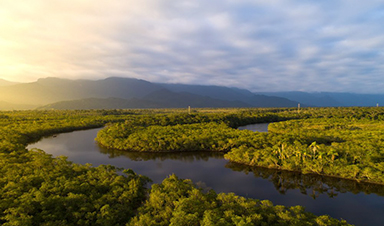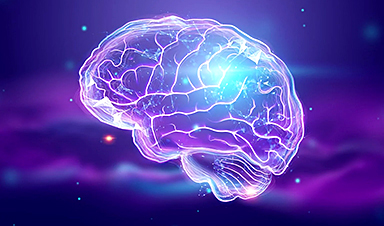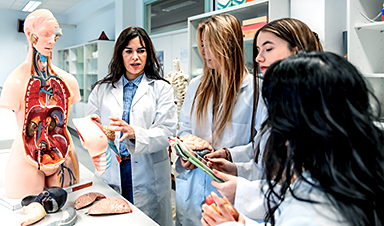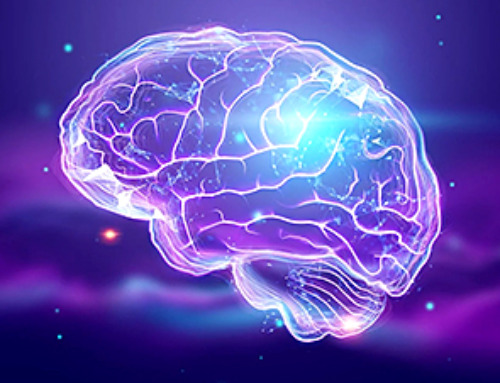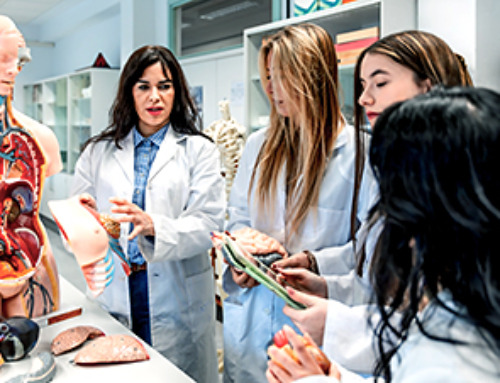A global carbon credits breakthrough at COP26 in Glasgow blew away any gloom from failing to phase out coal use, say many observers.
Discussion at the UN climate conference had been dominated by soaring atmospheric carbon dioxide levels, largely from fossil fuels but exacerbated by global deforestation, notably in tropical rainforests like the Amazon’s – often called the “Lungs of the Earth”.
But while COP26 failed to strike a coal deal, a carbon credit agreement could channel trillions of private sector dollars into protecting rainforests and farms, building renewable energy facilities and other projects to combat Climate Change and promote the circular economy needed to stabilise the Earth’s environment.
Nearly 200 countries at COP26 agreed to partially meet their climate targets by buying carbon credits/offsets created through the emission cuts of others.
This mechanism – originally put forward at the UN’s 2015 Paris Agreement – was previously held up by ‘double counting’: whether a credit could be claimed by both the country selling it and the nation buying it, but this was dropped, enabling the breakthrough.
Brazil is now set to be a major beneficiary after decades of trying to balance national demand for farmland against international pressure to preserve the Amazon rainforest, which still dominates the country’s landscape, despite manmade shrinkage by nearly a quarter, from 4,100,000km² to 3,279,649km² over the past 50 years.
Writing in ‘Americas Quarterly’, former Brazilian Finance Minister and World Bank CFO, Joaquin Levy said: “Beyond helping Brazil protect the Amazon, a healthy global carbon market would create great opportunities for commercial and investment partners that could join the country in helping accelerate its journey to become a net zero economy before 2050.”
Former Brazilian ambassador and diplomat, Arnildo Schildt, led a COP26 delegation and agreed that the carbon credits deal gave a major boost to an international consortium he has steered for two years, negotiating with Brazil’s farmers and forestry associations, governments, the UN, international banks, academics, and industry partners as well as investors:
“We have been working to harness a ‘dynamic duo’ – highly advanced nano sensors and Digital Twin technology – to monitor density, height and emissions and protect the rainforest in real time whilst allowing building asset owners to trade carbon credits/offsets internationally and reward our farmers for their support.
“Carbon credit buyers then know that newly planted or established trees are not simply felled after the credits are bought. A secure market builds trust and certainty – massively important to credible buyers.”
Paul Stannard, Chairman of the not-for-profit World Nano Foundation applauded the initiative: “This would create a circular economy for rainforests and the farms around them, raising carbon credits of significant value to industries needing to offset emissions, while generating income for countries needing to alleviate pressure on rainforests.
“Two-thirds of the money will help sustain forests and eco-farms, with the remainder pledged to sustainable efforts in our major cities and urban spaces. Key projects will include renewable energy to help these countries drive down their own carbon emissions.”
Leading Digital Twin company Cityzenith – a World Economic Forum Global Innovator – has already developed its platform technology to incorporate carbon credits/offsets for the built environment and now aims to create a circular economy for the world’s buildings, farms, and forestry.
“This enhances the impact and savings, already estimated at a $280 billion, for the built environment alone,” said Cityzenith Founder and CEO Michael Jansen.
“We’re proud that Cityzenith is playing an ever-increasing role in tackling Climate Change and, with this initiative, advancing the circular economy cause.”
Lindsey Vest, Smart Cities & Smart Spaces Research Analyst for global technology intelligence firm ABI Research explained that a circular economy strategy would switch from mankind’s established but unsustainable ‘take-make-waste’ economy, adding:
“Circularity concepts such as remanufacturing, reuse, and the sharing economy will be critically enabled by smart cities technologies such as IoT (the Internet of Things – devices and systems that exchange data), AI and Digital Twins.”
ABI Research reported that many governments now plan to increase circularity, notably through the EU’s new Circular Economy Action Plan – part of its Green Deal – while China’s 14th Five-Year Plan (2021-2025) specifically targets Circular Economy Development.
This is in addition to work by organizations such as Cityzenith, Vodafone, the globally recognized Ellen MacArthur Foundation – dedicated to circular economy education and connection for companies and governments – and C40 Cities, whose 97 member cities generate 25% of global GDP and champion the circular economy.
News
New Once-a-Week Shot Promises Life-Changing Relief for Parkinson’s Patients
A once-a-week shot from Australian scientists could spare people with Parkinson’s the grind of taking pills several times a day. The tiny, biodegradable gel sits under the skin and releases steady doses of two [...]
Weekly injectable drug offers hope for Parkinson’s patients
A new weekly injectable drug could transform the lives of more than eight million people living with Parkinson's disease, potentially replacing the need for multiple daily tablets. Scientists from the University of South Australia [...]
Most Plastic in the Ocean Is Invisible—And Deadly
Nanoplastics—particles smaller than a human hair—can pass through cell walls and enter the food web. New research suggest 27 million metric tons of nanoplastics are spread across just the top layer of the North [...]
Repurposed drugs could calm the immune system’s response to nanomedicine
An international study led by researchers at the University of Colorado Anschutz Medical Campus has identified a promising strategy to enhance the safety of nanomedicines, advanced therapies often used in cancer and vaccine treatments, [...]
Nano-Enhanced Hydrogel Strategies for Cartilage Repair
A recent article in Engineering describes the development of a protein-based nanocomposite hydrogel designed to deliver two therapeutic agents—dexamethasone (Dex) and kartogenin (KGN)—to support cartilage repair. The hydrogel is engineered to modulate immune responses and promote [...]
New Cancer Drug Blocks Tumors Without Debilitating Side Effects
A new drug targets RAS-PI3Kα pathways without harmful side effects. It was developed using high-performance computing and AI. A new cancer drug candidate, developed through a collaboration between Lawrence Livermore National Laboratory (LLNL), BridgeBio Oncology [...]
Scientists Are Pretty Close to Replicating the First Thing That Ever Lived
For 400 million years, a leading hypothesis claims, Earth was an “RNA World,” meaning that life must’ve first replicated from RNA before the arrival of proteins and DNA. Unfortunately, scientists have failed to find [...]
Why ‘Peniaphobia’ Is Exploding Among Young People (And Why We Should Be Concerned)
An insidious illness is taking hold among a growing proportion of young people. Little known to the general public, peniaphobia—the fear of becoming poor—is gaining ground among teens and young adults. Discover the causes [...]
Team finds flawed data in recent study relevant to coronavirus antiviral development
The COVID pandemic illustrated how urgently we need antiviral medications capable of treating coronavirus infections. To aid this effort, researchers quickly homed in on part of SARS-CoV-2's molecular structure known as the NiRAN domain—an [...]
Drug-Coated Neural Implants Reduce Immune Rejection
Summary: A new study shows that coating neural prosthetic implants with the anti-inflammatory drug dexamethasone helps reduce the body’s immune response and scar tissue formation. This strategy enhances the long-term performance and stability of electrodes [...]
Scientists discover cancer-fighting bacteria that ‘soak up’ forever chemicals in the body
A family of healthy bacteria may help 'soak up' toxic forever chemicals in the body, warding off their cancerous effects. Forever chemicals, also known as PFAS (per- and polyfluoroalkyl substances), are toxic chemicals that [...]
Johns Hopkins Researchers Uncover a New Way To Kill Cancer Cells
A new study reveals that blocking ribosomal RNA production rewires cancer cell behavior and could help treat genetically unstable tumors. Researchers at the Johns Hopkins Kimmel Cancer Center and the Department of Radiation Oncology and Molecular [...]
AI matches doctors in mapping lung tumors for radiation therapy
In radiation therapy, precision can save lives. Oncologists must carefully map the size and location of a tumor before delivering high-dose radiation to destroy cancer cells while sparing healthy tissue. But this process, called [...]
Scientists Finally “See” Key Protein That Controls Inflammation
Researchers used advanced microscopy to uncover important protein structures. For the first time, two important protein structures in the human body are being visualized, thanks in part to cutting-edge technology at the University of [...]
AI tool detects 9 types of dementia from a single brain scan
Mayo Clinic researchers have developed a new artificial intelligence (AI) tool that helps clinicians identify brain activity patterns linked to nine types of dementia, including Alzheimer's disease, using a single, widely available scan—a transformative [...]
Is plastic packaging putting more than just food on your plate?
New research reveals that common food packaging and utensils can shed microscopic plastics into our food, prompting urgent calls for stricter testing and updated regulations to protect public health. Beyond microplastics: The analysis intentionally [...]
